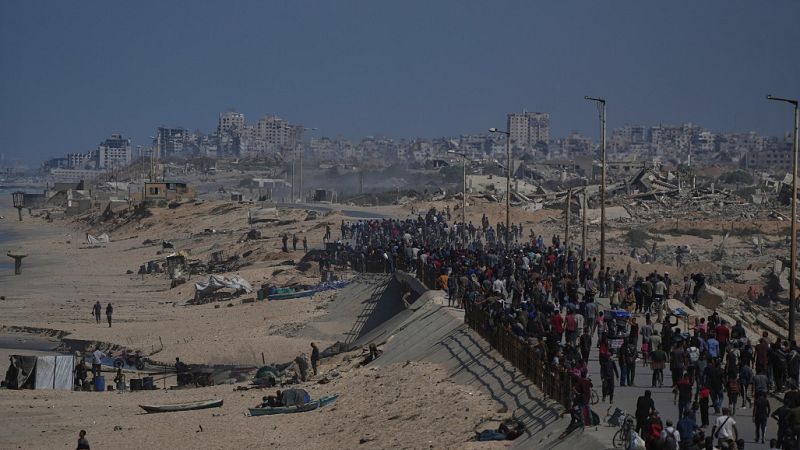Gaza Ceasefire triggers mass return of displaced Palestinians to their homes

A historic ceasefire came into effect in Gaza at noon local time on Friday, marking the first cessation of fighting since March and setting in motion a U.S.-drafted plan to end the two-year war. The truce triggered an immediate mass movement of displaced Palestinians returning north as Israeli forces began a partial withdrawal.
Approved by the Israeli cabinet on Thursday night, the ceasefire activated the first phase of the U.S. plan.
The Israeli military confirmed its troops had withdrawn to an agreed-upon redeployment line, pulling back from areas like eastern Khan Younis.
A government spokesperson stated Israel would initially retain control of 53% of the territory.
This allowed thousands of Palestinians to begin the journey back to Gaza City, with footage showing massive crowds moving north along the coastal road.
The first phase: hostages for prisoners
The initial 72-hour period is critical. Under the terms, Hamas is expected to release the 20 remaining living Israeli hostages.
In return, Israel will free 250 Palestinians serving long prison sentences and 1,700 others detained in Gaza during the war.
Prime Minister Benjamin Netanyahu credited "heavy military pressure" and thanked U.S. President Donald Trump for his support in achieving the deal.
Addressing a deepening humanitarian crisis
The pause is intended to facilitate a surge of aid, with Israel permitting 600 trucks daily—a return to pre-war levels.
This is urgently needed, as malnutrition is rife and parts of Gaza are experiencing famine, according to leading food security authorities.
Medical workers also plan to use the truce to begin recovering the tens of thousands of bodies believed trapped under rubble.
A long road to a permanent peace
While a senior Hamas official claimed to have received guarantees the war is over, major challenges remain.
The broader U.S. plan, which calls for Hamas to disarm and an international transitional government to rule Gaza, still requires difficult negotiations.
The ceasefire, however, represents the closest the warring parties have come to a permanent end to a conflict that has killed over 67,000 Palestinians and wounded nearly 170,000, according to the Gaza health ministry.
Today

